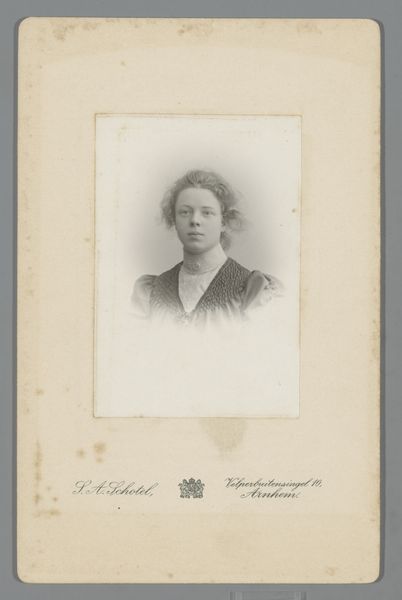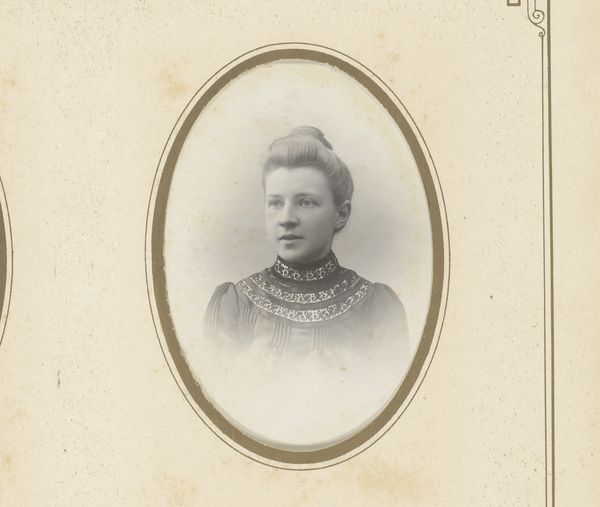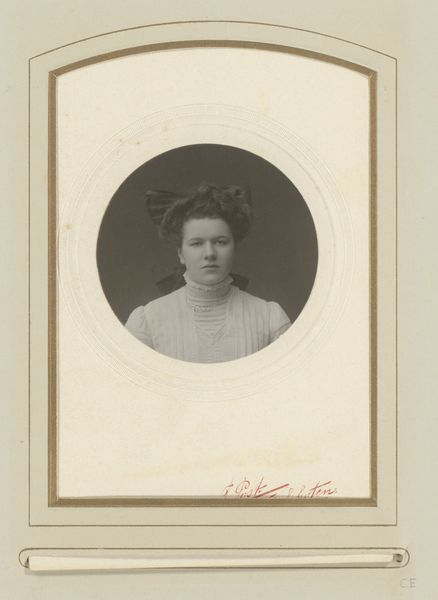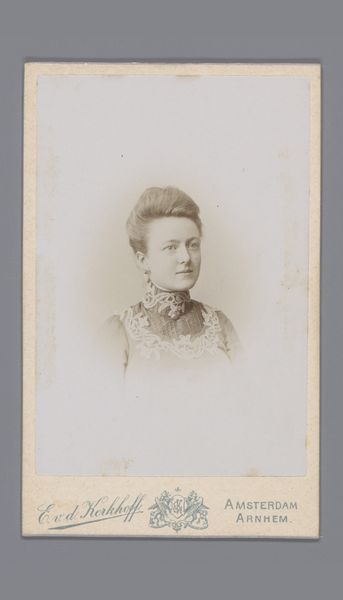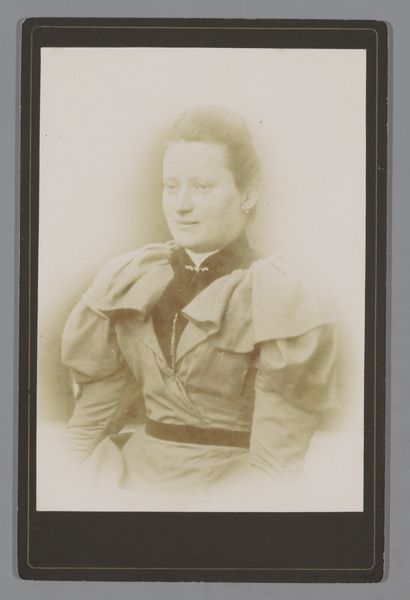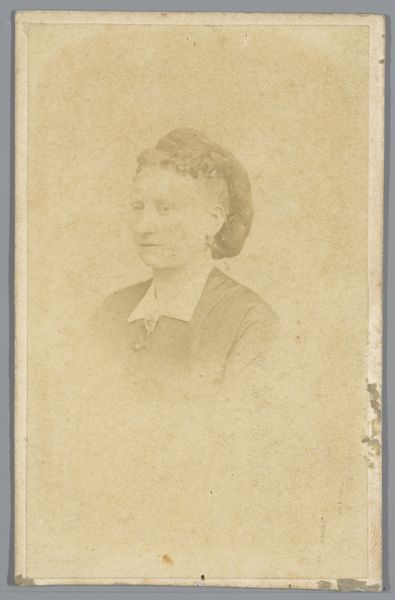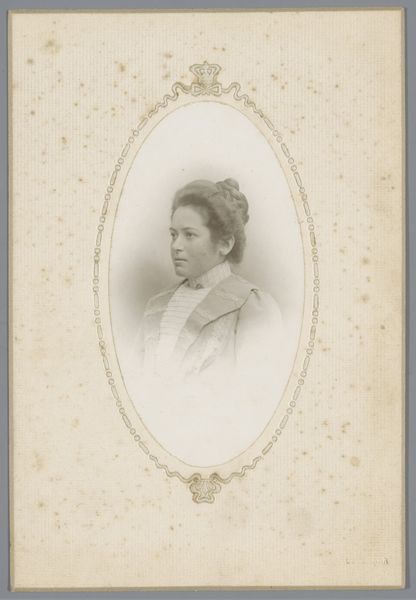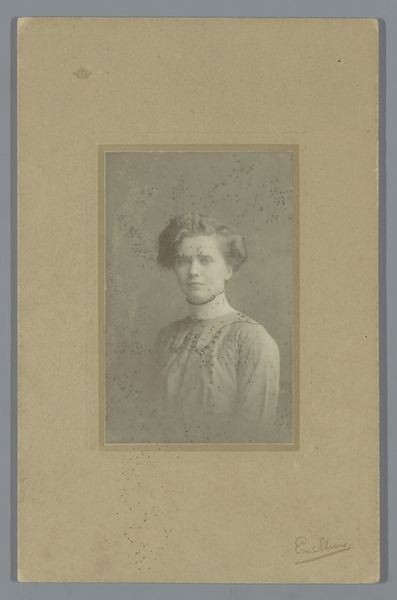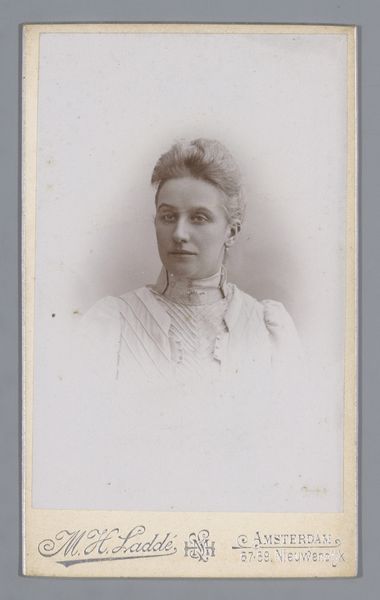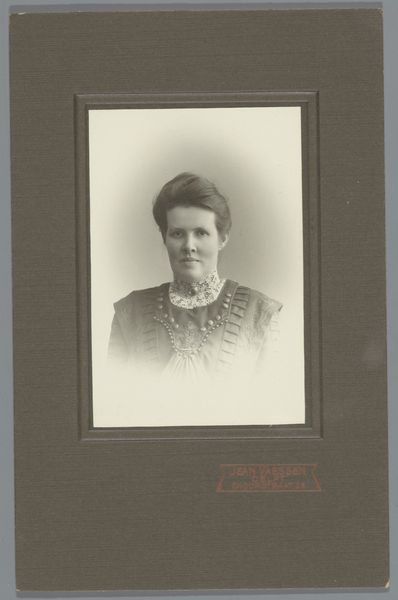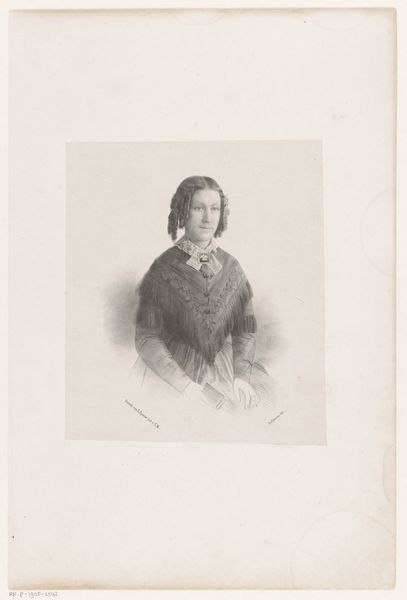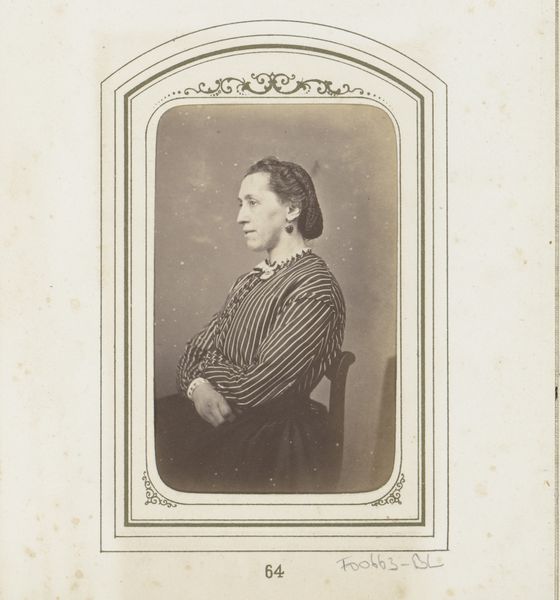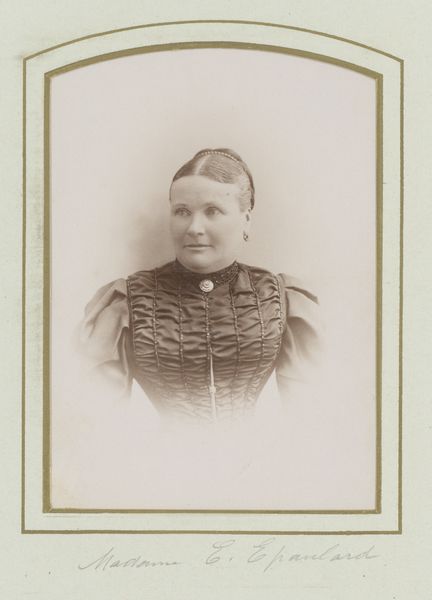
photography
#
portrait
#
photography
#
historical fashion
#
classicism
Dimensions: height 168 mm, width 107 mm
Copyright: Rijks Museum: Open Domain
Editor: So this is Stephanus Adrianus Schotel’s “Portret van Emma Sardemann,” possibly from 1905. It's a photograph, of course. It strikes me as quite formal, almost austere, yet there’s something about her expression that feels quite modern. What do you see in this portrait? Curator: I see a potent articulation of turn-of-the-century ideals of femininity intertwined with the constraints placed upon women in that era. Her gaze is direct, but there's a palpable sense of self-awareness, perhaps even defiance, behind it. How does the fashion—the high neck, the severe lines—contribute to this sense of controlled presentation, and how might that relate to women’s roles at the time? Editor: That’s a good point; her clothes do seem almost like a uniform. Do you think the artist was trying to say something about social expectations? Curator: I believe Schotel, consciously or unconsciously, captured a moment of tension: the subject’s individual spirit wrestling with the societal expectations imposed upon her gender. Consider how photography itself was democratizing representation, allowing for broader participation, but also standardizing beauty ideals. What kind of power dynamics were at play during the very act of taking the photo? Editor: I hadn't considered the democratizing aspect of photography. That’s really interesting to think about. Curator: Precisely. By understanding photography’s historical context, it reframes our perception. How different this is compared to, say, aristocratic portraiture! Editor: Right! Seeing this as a negotiation between subject and society, not just a simple portrait, gives it so much more depth. Thanks! Curator: My pleasure. I hope it will influence your studies.
Comments
No comments
Be the first to comment and join the conversation on the ultimate creative platform.
